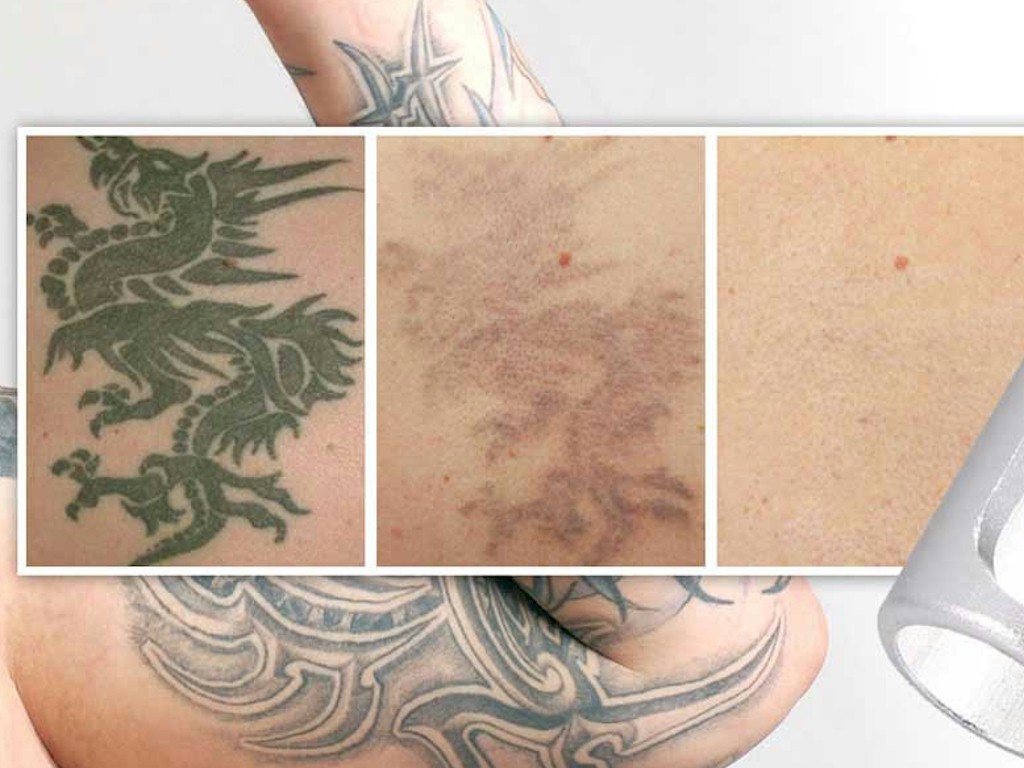
Tattoo removal
Lasers are the most common method of tattoo removal performed today. Tattoos consist of thousands of particles of tattoo ink suspended in the skin. The normal human immune system typically removes small foreign particles from the skin. Tattoo ink particles are too big to be removed by this system and are thus considered permanent. The use of lasers helps to break up these particles into smaller pieces that can be removed by the immune system.
Laser treatments work by targeting the ink particles in the skin with highly concentrated light waves that heat up the ink particles and cause them to fragment into smaller particles that are able to be cleared away by the body's immune system.
Complete removal of a tattoo is usually not accomplished in one laser treatment session. Laser tattoo removal typically requires more than one treatment to reduce the size of the ink particles and make it easier for them to be dispersed by the immune system.
Does tattoo removal hurt?
There is some degree of discomfort when getting a tattoo removed, although the pain is relatively manageable. Sometimes, skin numbing can be used to help make the pain more tolerable.
Tattoo removal healing
It will take some time for the skin to heal after tattoo removal. Most side effects are temporary, with the most common reactions being redness, swelling, bruising, scabbing and tenderness. Most of the time these reactions resolve within a week.